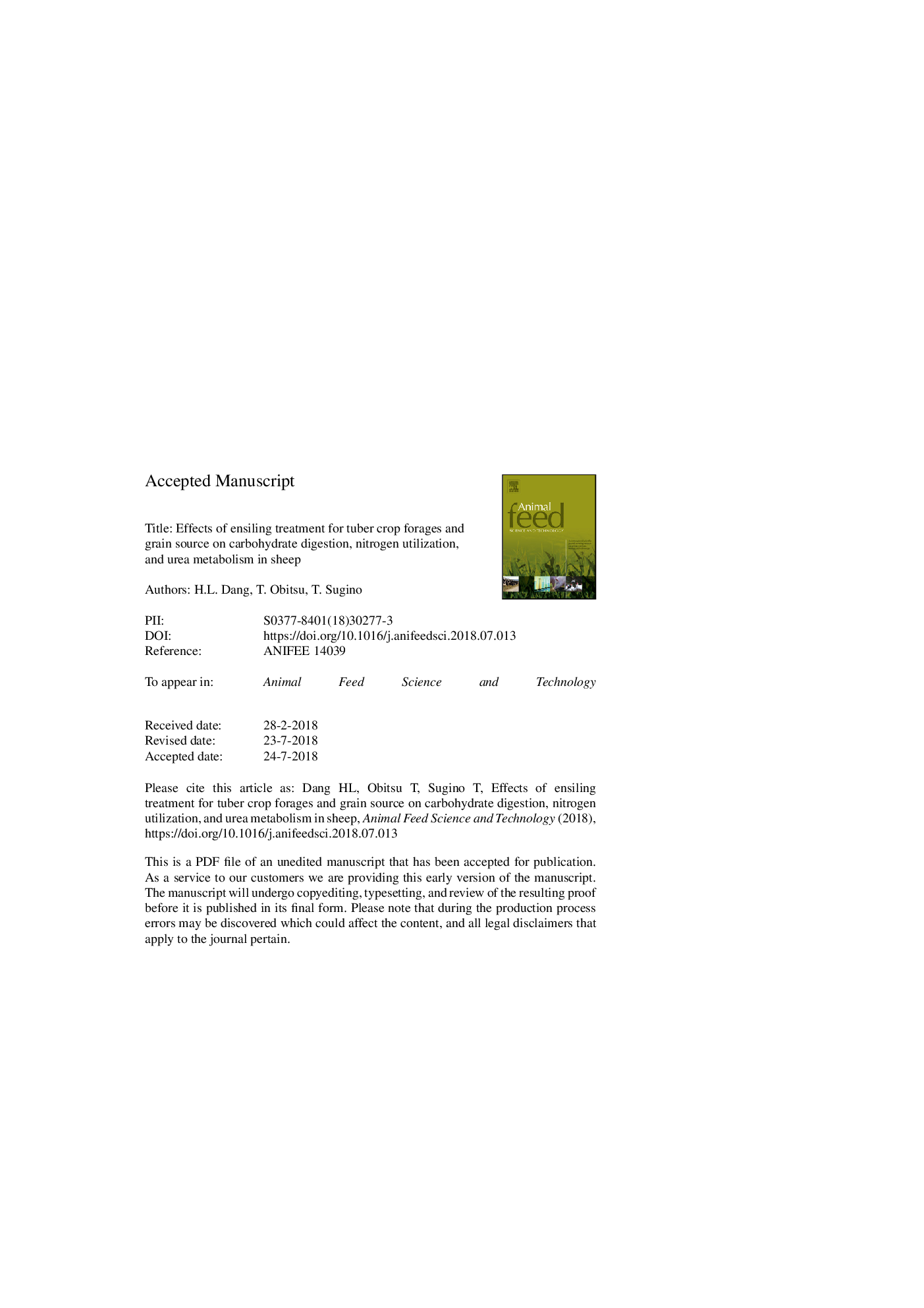| Article ID | Journal | Published Year | Pages | File Type |
|---|---|---|---|---|
| 8490905 | Animal Feed Science and Technology | 2018 | 33 Pages |
Abstract
This study investigated the effects of formic acid (FA) treatment for ensiling cassava foliage (CF) and sweet potato vine (SPV) with corn or barley grains on ruminal and total tract nutrient digestion, nitrogen (N) utilization, and urea metabolism in sheep. Four wethers fitted with ruminal and duodenal cannulae were assigned to a 4âÃâ4 Latin square design with a 2âÃâ2 factorial arrangement with ensiling treatment and grain source as the main effects. Sheep were fed four mixed diets containing the untreated CF and SPV silages with rolled barley or steam- flaked corn, or the FA-treated silages with rolled barley or steam-flaked corn. All experimental diets were formulated to contain 600âg forage (CF silage:SPV silage:oat hay, 150:150:300) and 400âg concentrate per kg dry matter (DM). The diets (120âg crude protein/kg DM; 10.6 and 11.2âMJ metabolizable energy/kg DM for the barley- and corn-based diets, respectively) were provided at 22âg/kg of body weight on a DM basis. The dietary treatments did not affect DM intake, but the total tract DM digestibility was higher for the corn-based diets than for the barley-based diets. The ruminal digestion of non-fiber carbohydrate (NFC) was higher (Pâ<â0.01) for the corn-based diets than for the barley-based diets, and tended to be higher (Pâ=â0.08) for the FA-treated silage diets than for the untreated silage diets, which reflected higher NFC content in the FA-treated CF silage than in the untreated silage. The ruminal digestion of neutral detergent fiber was lower (Pâ<â0.05) for the corn-based diets than for the barley-based diets, but was not affected by the ensiling treatment. Ruminal pH and total volatile fatty acid concentration did not differ among the diets, but the ruminal ammonia-N concentration was lower (Pâ<â0.01) for the FA-treated silage diets than for the untreated silage diets. The intake and total digestion of N were higher (Pâ<â0.01) for the corn-based diets than for the barley-based diets, but net ruminal N loss and ruminal microbial N synthesis were similar among the treatments. The urea-N production, determined by constant intravenous infusion of [15N2]urea, was lower (Pâ<â0.05) for the barley-based diets than for the corn-based diets. In conclusion, the use of FA-treated tuber crop silages may increase ruminal NFC digestion and reduce the ruminal ammonia-N concentration. However, the changes in carbohydrate digestion from the FA-treated silages and grain sources had little effect on ruminal microbial N synthesis or ruminal N digestion in sheep.
Keywords
Related Topics
Life Sciences
Agricultural and Biological Sciences
Animal Science and Zoology
Authors
H.L. Dang, T. Obitsu, T. Sugino,
